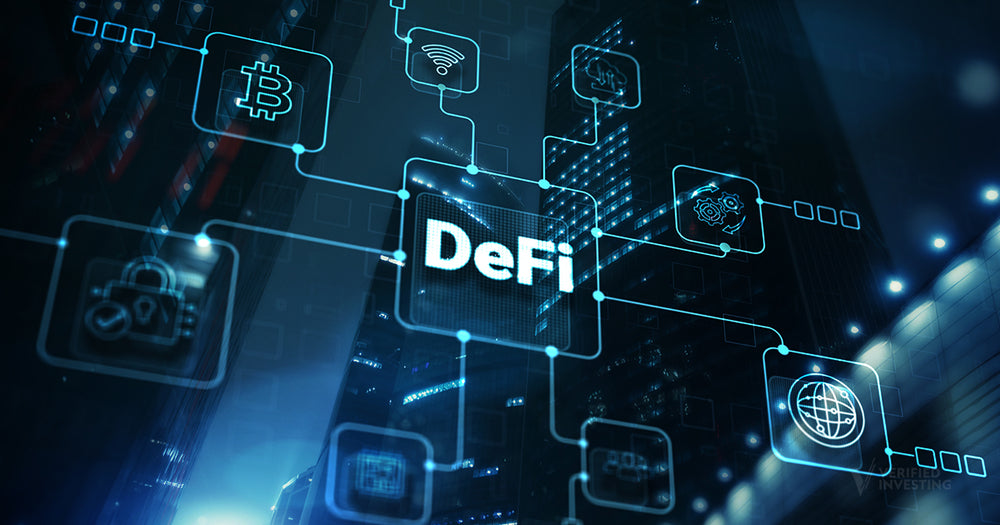What Is Defi And Layer 2?

Decentralized Finance (DeFi) is a collective term for decentralized networks that provide financial services using blockchains. DeFi distributed apps (dapps) use smart contracts to provide peer-to-peer financial services that bypass financial intermediaries, such as banks, brokers, exchanges, and credit card companies, resulting in less expensive and quicker financial transactions.
DeFi gives the unbanked and underbanked access to financial services that are denied to them by centralized financial institutions due to low credit scores, spotty work history, or no permanent residence. It also facilitates quick cross-border transactions by eliminating the numerous fees and delays caused by traditional banking. Additionally, no government or financial entity can block DeFi payments.
What Can You Do With DeFi?
DeFi expands on Bitcoin’s original premise of crypto as digital money by using the blockchain to implement a wide array of complex financial transactions. It does this by using smart contracts, which are immutable, self-executing contracts written into the blockchain. These contracts automatically execute agreements when predefined conditions are met. They eliminate the use of intermediaries and minimize the chances of human error.
Some things you can do with DeFi include:
- Borrowing crypto.
- Lending crypto.
- Making low-cost, borderless payments.
- Peer-to-peer crypto trading - No exchange fees.
- Using stablecoins for transactions. Stablecoins are considered a form of DeFi.
- Interest-bearing crypto savings accounts.
- Yield farming: Earning higher interest by staking your crypto in defi exchanges.
- Buying insurance.
- Betting in prediction markets.
- Crowdfunding.
- Buying derivatives or synthetic assets.
- Crypto insurance against smart contract failures and other crypto-related risks.
- Making NFTs.
How Does DeFi Differ From Traditional Banking?
DeFi is touted as an alternative to traditional banking, but whether it is right for you depends on the weight you put on these factors:
Decentralization
- Traditional banking is centralized and tightly controls financial operations.
- DeFi is decentralized, with no authority that could block transactions.
Accessibility
- Traditional banking is unavailable outside of “bankers' hours” and on the weekends. Settlements, debits, or credits will be cleared only during regular business hours.
- DeFi is accessible 24/7 to anyone with an internet connection.
Intermediaries
- Traditional banking is filled with intermediaries, each charging transaction fees. This results in higher transaction costs and delays in fulfillment. International payments can take days to clear the various hurdles on both ends of the transaction.
- DeFi eliminates long delays, especially with cross-border transactions. There are no intermediaries between the sender and the recipient. Everything is handled automatically by smart contracts.
Custody
- Traditional banking controls your money, deciding who to lend it to or what assets to buy with it to make a profit without consulting you.
- DeFi users have direct control of their assets.
Interest Rates
- Traditional banking generally offers lower interest rates to depositors.
- DeFi offers much higher interest rates, which is a significant selling point for many investors.
What Is Layer 2?
Layer 2 is an innovation for DeFi to reduce blockchain congestion and transaction fees. It does this by offloading transactions from the blockchain (aka Layer 1 blockchain) and pushing the completed transactions back onto the Layer 1 blockchain in batches. Layer 1 then validates the transactions and writes them to the official blockchain.
Hazards Of Using DeFi
The financial innovations of DeFi come with risks that traditional banking doesn’t have.
- The most important one is the lack of regulation and consumer protection. Not only does this expose users to the possibility that defi will be declared illegal in their jurisdiction, but it also leaves them with no recourse in the event of fraud or theft of their crypto assets.
- Code exploits are another substantial risk. DeFi is built on smart contracts, which could contain vulnerabilities or bugs that hackers can exploit. Hundreds of millions of dollars worth of crypto are stolen from DeFi platforms each year through code exploits, including hijacking the governance of a protocol and draining the funds.
- The implementation of Layer 2 is not a cure-all. The growing popularity of DeFi can still lead to network congestion and higher transaction fees when high volumes overwhelm the blockchain.
- Volatility in crypto markets can send the value of your holdings sharply lower with no warning. You won’t be able to limit your losses if your coins are staked as loan collateral or tied up in a yield-farming liquidity pool.
- Another risk of DeFi liquidity pools is the difficulty in getting your money back if everyone exits the pool at once. If a DeFi protocol needs liquidity pools to function, it could collapse when investors pull their stakes.
Forewarned is Forearmed
Decentralized Finance offers several advantages over traditional finance, plus the allure of earning high yields on your crypto. However, successfully negotiating the world of DeFi requires users to educate themselves on how it works and how to avoid pitfalls.
DeFi yield farming isn’t the only way to profit from cryptocurrencies. Verified Investing offers indispensable resources for the active crypto trader. Our Trader’s Edge Crypto service provides comprehensive daily crypto trade alerts and market analysis from our expert traders.
Trading involves substantial risk. All content is for educational purposes only and should not be considered financial advice or recommendations to buy or sell any asset. Read full terms of service.




